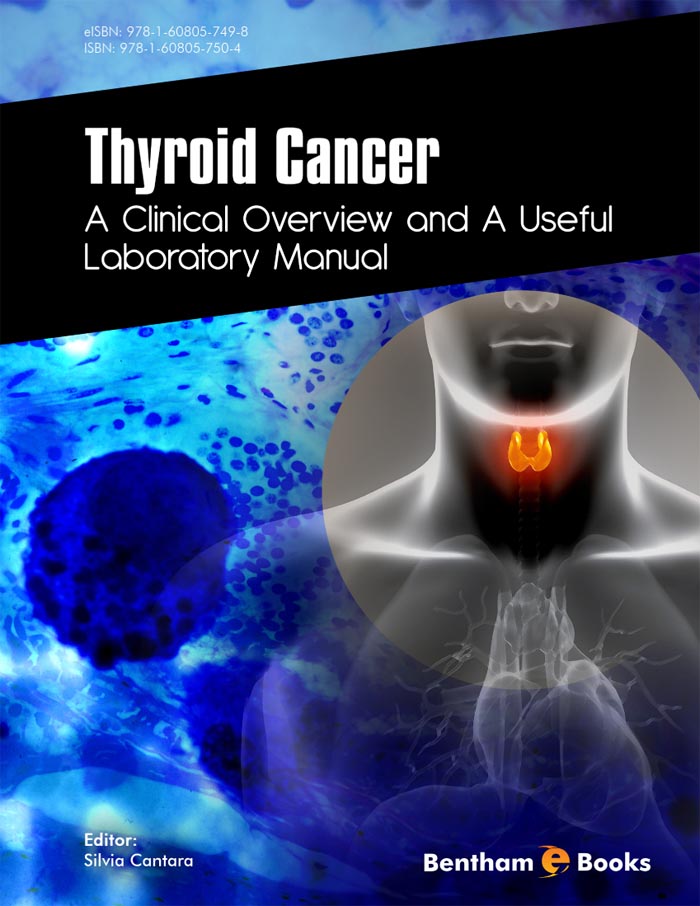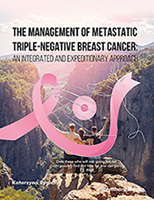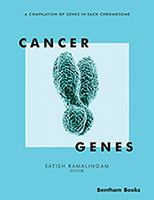Preface
Thyroid nodules are very frequent in the general population especially in those countries with iodide deficiency. The majority of thyroid nodules are benign
and approximately 5% of thyroid nodules are cancer. In this view, it is very important the pre-surgical diagnosis to distinguish benign from malignant lesions
in order to limit surgical treatment only to the malignant/suspicious nodules. Nowadays, fine needle aspiration cytology (FNAC) is the “gold standard” for the
differential diagnosis of thyroid nodules. In general, in expert hands, it is associated with good specificity and acceptable sensitivity. However, this procedure
has some limitations related to inadequate sampling or to the difficulty to discriminate follicular lesions. Therefore, a significant proportion of patients who do
not have malignant lesions are submitted to unnecessary thyroidectomy. The discovery of genetic alterations specific for differentiated thyroid cancer may provide
molecular markers to be searched for in the material obtained by FNA, thus increasing the diagnostic accuracy of traditional cytology.
Overall, this eBook describes the problems of FNAC limitations; previous experience on oncogenes search; laboratory limitations; new molecular techniques to
refine diagnosis and the prognostic significance of each genetic alteration providing a critical and useful manual (together with a laboratory handbook) essential for students,
young endocrinologist, family doctors but also for biologists and technicians involved in the pre-surgical diagnosis of thyroid cancer.
In chapter 1, the author has introduces the matter of thyroid nodules, their incidence in the general population,
the percentage of malignant thyroid nodules and the benign lesions. Chapters 2-3 are dedicated to the methods for the
diagnosis of thyroid nodules. Professor Pacini (author of chapter 2) is an internationally recognized authority in the
field of thyroid cancer and thyroide diseases in general. His research has contributed to the diagnosis and treatment
of thyroid cancer and he has been deeply involved in the study of the thyroid effects of the post-Cherbobyl radioactive fall-out.
He contributed to this eBook with a well designed review on FNAC.
In chapters 4-5 oncogenes involved in thyroid tumorigenesis and methods for the routinary molecular analysis of these
oncogenes in a thyroid aspirate, are described. The author is a post-doctoral researcher which contributed with Professor Pacini
to one of the major internationally recognised paper on this subject.
Chapters 6-8 are dedicated to the problem of familial thyroid cancer, medullary thyroid cancer and the new approaches of the target theraphy for refractory cancers.
In the last chapter, possible new markers to be introduced in the diagnosis of thyroid cancer (i.e. telomerase, miRNA) are described with particular accent on their importance, specificity for thyroid cancer and problems related to their evaluation (i.e. can they be measured in blood or FNAC?; is their measurement easy to perform or time consuming?).
We would like to thank Bentham Science Publishers for their support and efforts.
Silvia Cantara
Section of Endocrinology & Metabolism
Department of Internal Medicine
Endocrinology & Metabolism and Biochemistry
University of Siena
Siena
Italy





